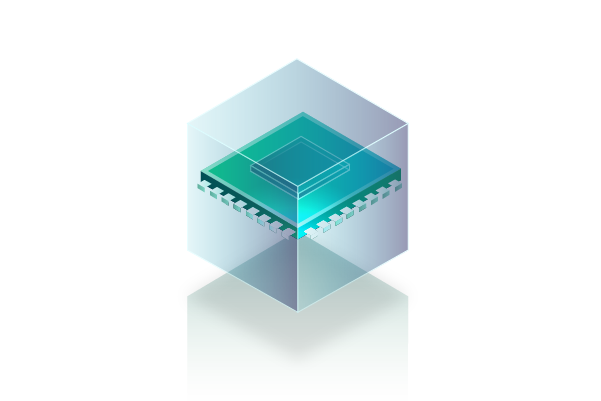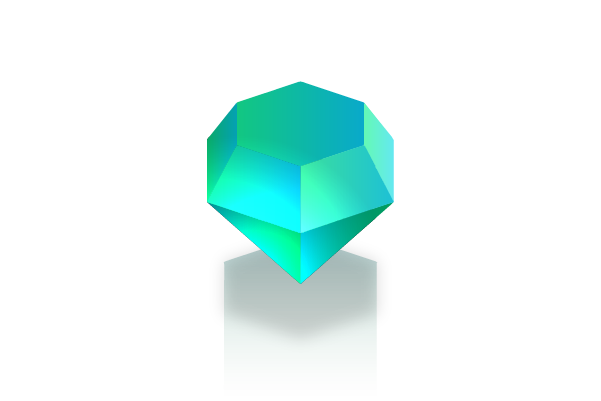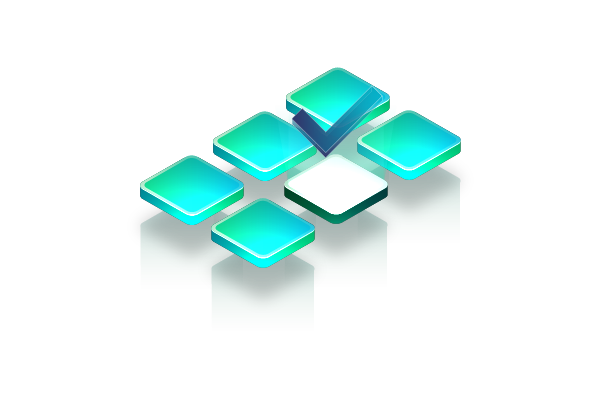Blockchain technology has revolutionized various industries by providing a decentralized and secure way to record transactions. As we move into 2025, the importance of blockchain ecosystems continues to grow, offering innovative solutions and enhancing the capabilities of decentralized applications. In this article, we will explore the 12 best blockchain ecosystem protocols in 2025, discussing their unique features and contributions to the blockchain space.
The blockchain ecosystem is vast and varied, with each protocol offering distinct advantages and use cases. From enhancing financial transactions to supporting smart contracts and decentralized applications (dApps), these protocols are the backbone of the blockchain industry. Understanding the top protocols can help businesses and developers choose the right platform for their needs, ensuring optimal performance and security.
As we delve into the specifics of each protocol, we’ll also cover key aspects of blockchain technology, how to choose the right protocol for your project, and the future trends that are shaping the blockchain landscape. Whether you’re a blockchain enthusiast, developer, or business owner, this guide will provide valuable insights into the best blockchain ecosystem protocols available in 2025.
The Basics of Blockchain Technology

Blockchain technology, at its core, is a decentralized and distributed ledger system that records transactions across multiple computers. This ensures that the recorded transactions cannot be altered retroactively, providing a high level of security and transparency. Each block in the blockchain contains a list of transactions, and once a block is completed, it is added to the chain in a linear, chronological order.
One of the key features of blockchain technology is its decentralized nature. Unlike traditional centralized systems, where a single entity has control, blockchain operates on a peer-to-peer network. This means that no single party has control over the entire blockchain, reducing the risk of fraud and manipulation. Each participant in the network has access to the entire blockchain, ensuring transparency and trust.
Also Read: What is DCA Crypto? A Key to Crypto Wealth
Another significant aspect of blockchain technology is its use of cryptographic algorithms to secure data. Each transaction is verified and encrypted using complex mathematical algorithms, making it nearly impossible for unauthorized parties to alter the data. This high level of security makes blockchain an ideal solution for various applications, including financial services, supply chain management, and healthcare.
Key Features of Blockchain Ecosystems
Blockchain ecosystems are designed to support a wide range of applications and use cases, each with its unique set of features. Understanding these key features can help you appreciate the versatility and potential of blockchain technology.
- Decentralization: Decentralization is a fundamental feature of blockchain ecosystems. It eliminates the need for a central authority by distributing control across a network of nodes. This enhances security and reduces the risk of single points of failure.
- Transparency: Every transaction recorded on a blockchain is visible to all participants in the network. This transparency ensures that all actions can be audited and verified, fostering trust among users.
- Immutability: Once data is recorded on the blockchain, it cannot be altered or deleted. This immutability ensures the integrity of the data, making blockchain an ideal solution for applications that require tamper-proof records.
- Security: Blockchain technology employs advanced cryptographic techniques to secure data. Each transaction is encrypted and linked to the previous transaction, creating a chain that is extremely difficult to compromise.
- Consensus Mechanisms: Blockchain ecosystems use various consensus mechanisms, such as Proof of Work (PoW) and Proof of Stake (PoS), to validate transactions and maintain the integrity of the network. These mechanisms ensure that all participants agree on the state of the blockchain.
- Smart Contracts: Smart contracts are self-executing contracts with the terms of the agreement directly written into code. They automatically enforce and execute the terms of a contract when predefined conditions are met, reducing the need for intermediaries.
- Scalability: As blockchain technology evolves, scalability remains a critical focus. Solutions like sharding and layer 2 protocols are being developed to enhance the network’s capacity to handle a growing number of transactions without compromising performance.
- Interoperability: Interoperability refers to the ability of different blockchain networks to communicate and interact with each other. This feature is crucial for creating a cohesive blockchain ecosystem where various platforms can work together seamlessly.
- Tokenization: Tokenization involves converting assets into digital tokens that can be easily transferred and managed on a blockchain. This feature opens up new possibilities for asset management, trading, and investment.
- Governance: Effective governance mechanisms are essential for the development and maintenance of blockchain ecosystems. These mechanisms ensure that decisions are made transparently and inclusively, often involving the community in the decision-making process.
Understanding these key features is essential for appreciating the full potential of blockchain ecosystems. They provide the foundation for the innovative applications and protocols that drive the blockchain industry forward.
12 Best Blockchain Ecosystem Protocols in 2025

As we explore the top blockchain ecosystem protocols in 2025, it’s important to recognize the unique strengths and features each protocol brings to the table. These protocols are at the forefront of innovation, providing robust platforms for decentralized applications, smart contracts, and more.
1. HeLa (HLUSD)
HeLa is a modular Layer-1 blockchain, is engineered for scalability, security, and interoperability. It provides a solid infrastructure for building decentralized applications, addressing some of the key challenges in the blockchain space.
By focusing on modularity, HeLa ensures that different components can be updated or replaced without affecting the entire system. This design philosophy promotes continuous improvement and adaptation to emerging technological trends, making HeLa a forward-looking platform.
2. Ethereum (ETH)
Ethereum is one of the pioneering blockchain platforms, has established itself as a leader in the decentralized ecosystem. It offers a robust environment for running smart contracts and decentralized applications (dApps), utilizing a proof-of-work (PoW) consensus mechanism. Ethereum supports a wide array of programming languages for dApp development, enabling developers to create diverse applications. The platform’s versatility and extensive use cases have contributed to its longevity and prominence in the blockchain industry.
3. Polkadot (DOT)
Polkadot stands out for its unique approach to blockchain interoperability. By enabling seamless data and asset transfers between different blockchains, Polkadot facilitates a more connected and scalable blockchain ecosystem. Its architecture supports multiple parallel blockchains, known as parachains, each optimized for specific tasks. This parallel processing capability enhances scalability and security, making Polkadot a versatile platform for a variety of applications, from DeFi to gaming.
4. Avalanche (AVAX)
Avalanche offers a high-speed, low-fee environment ideal for decentralized applications and decentralized finance (DeFi) projects. Its consensus mechanism, Avalanche, ensures quick finality and high throughput. The platform’s scalability and interoperability support a diverse range of applications, attracting developers looking for performance and efficiency. Avalanche’s ability to handle a large number of transactions per second positions it as a competitive choice in the blockchain space.
5. BNB (Binance Coin)
BNB, the native cryptocurrency of the Binance ecosystem, powers a wide range of applications, including the Binance Smart Chain (BSC). BNB’s deflationary model, achieved through regular token burns, contributes to its increasing value over time. The Binance ecosystem leverages BNB for transaction fees, staking, and other financial services, enhancing its utility and demand. This multifaceted approach helps solidify BNB’s role in the broader cryptocurrency market.
6. Stellar (XLM)
Stellar focuses on facilitating cross-border transactions and the tokenization of real-world assets. Its network offers quick settlement times and low transaction fees, making it an attractive option for financial applications, especially in regions with limited banking infrastructure. Stellar’s consensus protocol, the Stellar Consensus Protocol (SCP), ensures security and efficiency, enabling the platform to handle a high volume of transactions with minimal energy consumption.
7. Cosmos (ATOM)
Cosmos aims to create an interconnected network of blockchains, promoting interoperability and scalability through its Inter-Blockchain Communication (IBC) protocol. This protocol allows different blockchains to exchange data and assets seamlessly, fostering a more integrated blockchain ecosystem. Cosmos’s focus on modularity and scalability makes it a preferred choice for developers looking to build interconnected and scalable blockchain solutions.
8. Cardano (ADA)
Cardano is a third-generation blockchain platform that emphasizes sustainability, scalability, and interoperability. Its research-driven approach, underpinned by rigorous academic research and peer-reviewed papers, ensures a high level of security and efficiency. Cardano’s proof-of-stake (PoS) consensus mechanism, known as Ouroboros, provides a more energy-efficient alternative to PoW, making it a sustainable choice for developers and users alike.
9. Kaspa (KAS)
Kaspa is a rapidly growing Layer 1 blockchain known for its fast transaction confirmations and innovative consensus model. Utilizing a proof-of-work (PoW) consensus mechanism, Kaspa offers a unique approach to scalability and security. Its DAG (Directed Acyclic Graph) architecture allows for parallel transaction processing, significantly reducing confirmation times and enhancing overall network efficiency. This innovative design has garnered significant market interest and contributed to Kaspa’s rising prominence in the blockchain industry.
10. Algorand (ALGO)
Algorand is a leading blockchain ecosystem protocol that accelerates the convergence between traditional and decentralized finance. It enables the development of next-generation fintech products and facilitates the exchange of value in a secure, scalable, and efficient manner. Algorand’s consensus algorithm, Pure Proof of Stake (PPoS), ensures fast transaction finality while maintaining decentralization and security. This makes Algorand a preferred choice for developers building cutting-edge financial applications.
11. Hyperledger Sawtooth
Hyperledger Sawtooth, an open-source blockchain initiative hosted by Hyperledger and the Linux Foundation, is designed for enterprise use. It allows businesses to choose from several consensus mechanisms, including proof of elapsed time (PoET) and practical Byzantine fault tolerance (PBFT), depending on their specific needs. This flexibility makes Hyperledger Sawtooth suitable for a wide range of applications, from supply chain management to digital identity verification.
12. Waves
Waves is a versatile blockchain protocol that allows developers to create blockchain-enabled applications and smart contracts from scratch. It offers comprehensive and structured client toolkits and libraries, making it accessible for developers of all skill levels.
Waves provides a unique approach to dApp development by avoiding non-Turing complete languages and gas fees, ensuring a more straightforward and cost-effective development process. This approach has made Waves a popular choice for developers looking to build scalable and efficient blockchain applications.
How to Choose the Right Blockchain Protocol

Choosing the right blockchain protocol for your project is crucial to ensuring its success. With numerous options available, it’s essential to consider various factors that align with your specific needs and objectives. Here are some key considerations to help you make an informed decision:
Understand Your Use Case
Different blockchain protocols are designed to cater to different use cases. Whether you need a platform for decentralized finance (DeFi), supply chain management, or digital identity verification, understanding your specific requirements will help narrow down the choices.
Evaluate Scalability
Scalability is a critical factor, especially if you anticipate a high volume of transactions. Protocols like Solana and Avalanche are known for their high throughput and fast transaction speeds, making them suitable for applications requiring quick and frequent transactions.
Consider Security
Security is paramount in the blockchain ecosystem. Protocols with robust security measures, such as Cardano and Ethereum, offer strong protection against attacks and vulnerabilities. Look for platforms with proven security track records and comprehensive testing.
Assess Decentralization
Decentralization is a core principle of blockchain technology. Protocols like Bitcoin and Polkadot emphasize decentralization, ensuring no single entity has control over the network. This feature enhances trust and reduces the risk of censorship.
Look for Interoperability
Interoperability allows different blockchain networks to communicate and interact with each other. Polkadot and Cosmos are leading the way in enabling interoperability, making it easier to integrate multiple blockchains within a single ecosystem.
Examine Development Community and Support
A strong developer community and active support can significantly impact your project’s success. Ethereum and Binance Smart Chain have large, active communities that offer extensive resources, tutorials, and support for developers.
Also Read: 12+ Best Meme Coins To Consider in 2025
Review Consensus Mechanisms
Consensus mechanisms play a crucial role in the performance and security of blockchain protocols. Understand the differences between Proof of Work (PoW), Proof of Stake (PoS), and other consensus algorithms to determine which aligns best with your project’s goals.
Evaluate Cost and Fees
Transaction costs and fees can vary widely between protocols. If cost-efficiency is a priority, consider platforms like Binance Smart Chain and Harmony, which offer low transaction fees without compromising performance.
Governance and Upgradability
Effective governance mechanisms ensure that the protocol can evolve and adapt to future challenges. Tezos and Cardano have strong governance models that allow for continuous improvement and upgrades without hard forks.
Explore Developer Tools and Ecosystem
User-friendly developer tools and a thriving ecosystem can accelerate your project’s development. Protocols like Near and Algorand provide comprehensive toolsets and environments that simplify the development process.
Making an informed decision involves balancing these factors based on your project’s specific needs. By carefully evaluating each protocol’s strengths and limitations, you can select the one that best supports your goals and objectives.
Future Trends in Blockchain Technology
Blockchain technology is set to see significant advancements in 2024, with several key trends driving its growth and adoption. One of the major trends is the increased adoption of decentralized finance (DeFi), which allows users to access financial services without traditional intermediaries. Non-fungible tokens (NFTs) are also expected to expand into new areas such as digital art, gaming, and real estate, while the integration of blockchain with the Internet of Things (IoT) will enhance data security and reliability across various industries.
Another important trend is the focus on blockchain interoperability, enabling different networks to communicate and collaborate seamlessly. Projects like Polkadot and Cosmos are leading this effort, making it easier to integrate multiple blockchains within a single ecosystem. Additionally, the emphasis on sustainable and green blockchain solutions is growing, with developments like Ethereum 2.0’s transition to Proof of Stake (PoS) aiming to reduce the environmental impact of blockchain networks.
Regulatory developments will also play a crucial role in the future of blockchain technology. Governments and regulatory bodies are expected to introduce more comprehensive frameworks to address security, privacy, and consumer protection issues. This, along with the emergence of Decentralized Autonomous Organizations (DAOs) and the widespread adoption of Central Bank Digital Currencies (CBDCs), will shape the blockchain landscape, driving innovation and transforming various sectors.
Conclusion
As we navigate through 2025, the blockchain ecosystem continues to expand and evolve, driven by technological advancements and growing adoption across various industries. Blockchain technology is paving the way for innovative applications in decentralized finance (DeFi), supply chain management, digital identity verification, and beyond. Understanding the fundamentals and key features of blockchain ecosystems is crucial for appreciating their potential and impact.
Choosing the right blockchain protocol for your project involves careful consideration of several factors, including scalability, security, decentralization, and interoperability. By understanding your specific use case and evaluating the strengths of various protocols, you can make an informed decision that aligns with your goals. The growing focus on sustainable solutions and regulatory compliance further underscores the importance of staying updated with the latest developments in the blockchain space.
The future of blockchain technology is promising, with trends such as the rise of DeFi, the expansion of NFTs, and the integration of blockchain with IoT devices leading the way. As blockchain continues to revolutionize various sectors, staying informed about these trends and innovations will help individuals and businesses harness the full potential of this transformative technology. Whether you are a developer, entrepreneur, or enthusiast, the evolving blockchain landscape offers numerous opportunities to explore and leverage.
Disclaimer: The information provided by HeLa Labs in this article is intended for general informational purposes and does not reflect the company’s opinion. It is not intended as investment advice or recommendations. Readers are strongly advised to conduct their own thorough research and consult with a qualified financial advisor before making any financial decisions.

I am Carina Caringal, a technical writer specializing in blockchain engineering concepts, decentralized systems, crypto infrastructure, and Web3 technologies. My work focuses on analyzing and translating complex technical mechanisms into precise, structured, and insightful content for both developers and non-technical readers who want a deeper understanding of the decentralized ecosystem.
My background in blockchain and cryptocurrency is rooted in years of independent research, continuous learning, and hands-on exploration across multiple protocols and network architectures. I study the underlying mechanics of distributed ledger technology, from consensus algorithms and smart contract logic to network scalability, security models, cryptographic principles, and interoperability frameworks. This technical foundation shapes the way I approach every article, ensuring accuracy, depth, and relevance.
- Carina Caringalhttps://helalabs.com/blog/author/carina-caringal/
- Carina Caringalhttps://helalabs.com/blog/author/carina-caringal/
- Carina Caringalhttps://helalabs.com/blog/author/carina-caringal/
- Carina Caringalhttps://helalabs.com/blog/author/carina-caringal/

